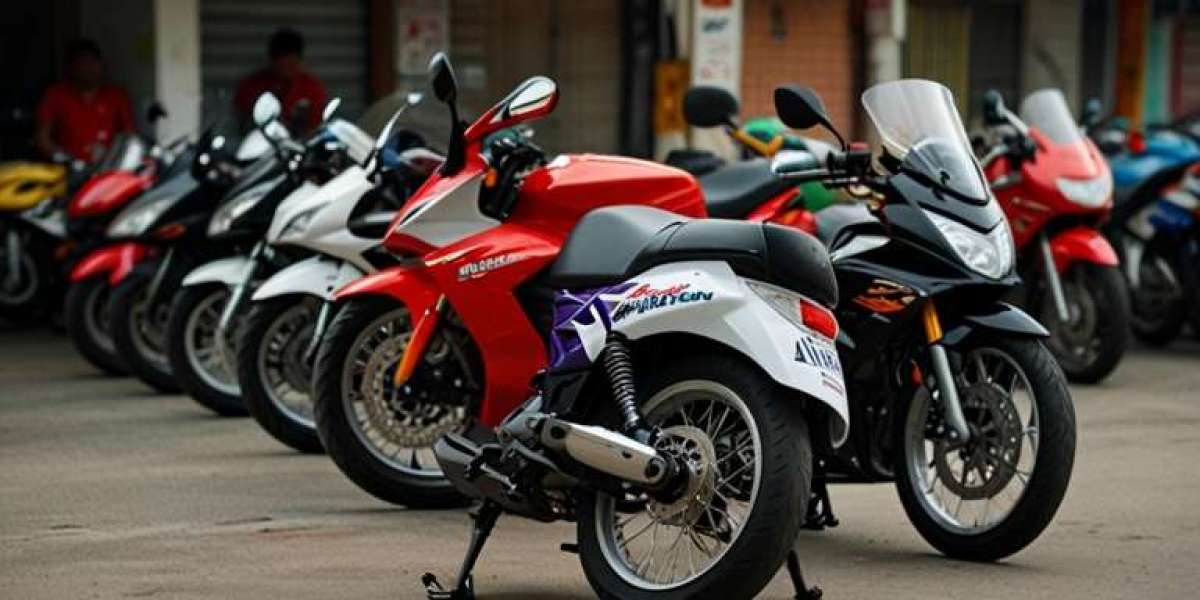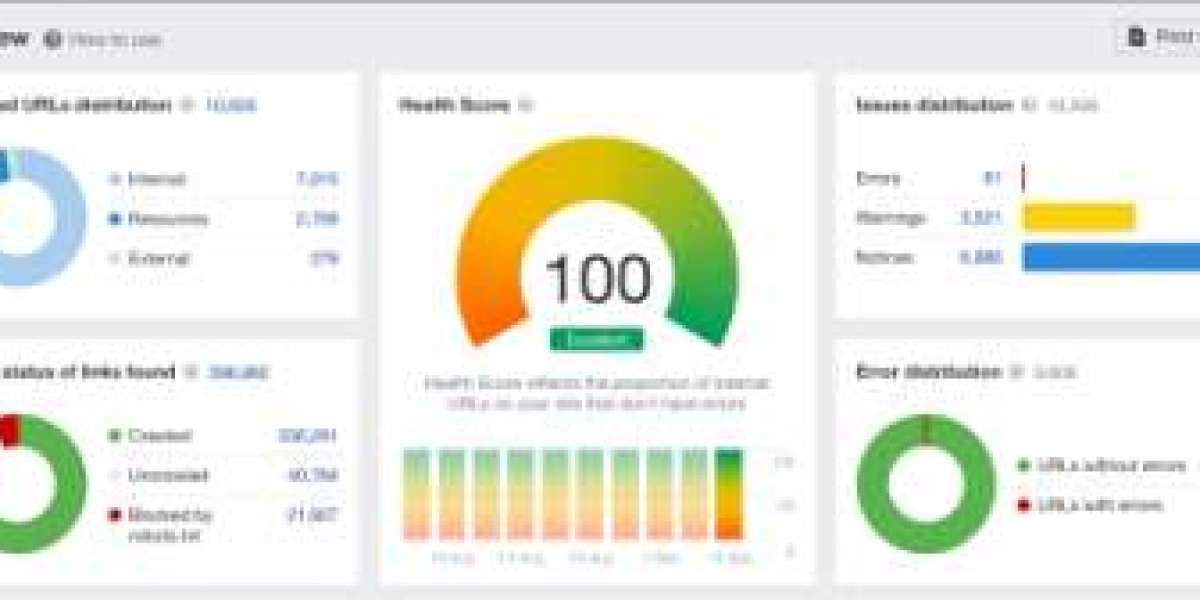The India premium motorcycle market is witnessing a paradigm shift—driven by evolving consumer tastes, rising incomes, and a strong desire for aspirational ownership rather than basic commuting. According to TechSci Research, this dynamic segment was valued at USD 1.3 billion in 2024 and is expected to nearly double to USD 2.5 billion by 2030, registering a robust CAGR of 12.5%. This growth is propelled by:
Rapid urbanization
Increasing disposable incomes
A growing biking culture
Advances in electric and ICE motorcycle technologies
Over the next decade, India's roads are expected to reflect not only trends in performance and design, but also connected mobility, electric propulsion, and immersive rider experiences. This report dives deep—exploring current dynamics, uncovering emerging trends, identifying market drivers, providing actionable insights, and offering a clear vision of what lies ahead.
Download Free Sample Report: https://www.techsciresearch.com/sample-report.aspx?cid=1442
Industry Key Highlights
Market Size & Growth: From USD 1.3 billion in 2024 to USD 2.5 billion by 2030 (12.5% CAGR).
Propulsion Evolution: ICE still dominates, but electric premiums are growing rapidly.
Segmenting by Region: South India leads growth, driven by infrastructure and lifestyle factors.
Consumer Preferences: Desire for adventure tours, smart connectivity, and customization rises.
Regulatory Influence: FAME subsidies and stricter emission/safety norms accelerate electric premium uptake.
Tech Adoption: Features such as ride-by-wire, traction control, and adaptive cruise become table stakes.
Rider Communities: Clubs, events, long-distance touring culture reinforce aspirational buying.
Infrastructure Growth: Showrooms, service centres, highway quality improve access and convenience.
Competitive Fragmentation: Both global and domestic brands jostle for positioning.
Rider Demographics: Young, tech-savvy consumers and women riders draw increasing attention from OEMs.
Market Drivers
1. Rising Disposable Income & Urbanization
With India’s GDP expanding, a growing urban middle class is channeling its disposable income into lifestyle vehicles. Premium motorcycles, long seen as aspirational, are now attainable for urban dwellers seeking both daily convenience and weekend leisure.
2. Biking Culture & Community
The rise of riding clubs, long-distance tours, meetups, and social media content has made biking more than transportation—it’s a lifestyle. Riders invest in machines and gear that reinforce their identity and community belonging.
3. Technological Advancements
Premium motorcycles are increasingly integrated with digital tech: TFT instrument clusters, smartphone connectivity, ride modes, traction control, and adaptive cruise—features once exclusive to luxury imports.
4. Policy & Regulatory Tailwinds
India’s FAME incentivizes electric mobility, while stricter emission norms push OEMs toward advanced ICE and electric platforms. Premium models often benefit from compliance faster and easier than mass-market variants.
5. Infrastructure & After-Sales Support
Expansion of premium dealership networks, organized servicing, regional tie-ups, and training programs contribute to confidence among new buyers.
6. Investment in E-Mobility
With rising EV awareness, manufacturers are focusing on premium electric motorcycles that offer instant torque and low maintenance. These models resonate with urban audiences seeking performance and sustainability.
Emerging Trends
Electric Premium Bikes Take Center Stage
Though ICE bikes still dominate, EV penetration in the premium segment is accelerating—thanks to:
Cost parity with ICE at higher price points
Impressive instant torque and acceleration
Government subsidies and pilot charging stations
Urban lifestyle alignment (zero-emission identity)
By 2030, EVs likely account for a substantial minority—potentially 20–30% of premium segment volume.
Adventure & Touring Culture
Adventure-ready bikes with long-travel suspension, luggage mounts, ergonomic comfort, and off-road capabilities are rising in popularity. Weekend road trips are increasingly seen as part of aspirational living—driving demand for dual-purpose bikes.
Customization & Limited Editions
Riders seek individuality. Brands are responding with:
Special edition colorways
Factory customization options
Rider-specific accessories
Heritage-inspired models
Digitalization & Connected Services
Smartphone-enabled features—live maps, ride diaries, over-the-air updates, and remote diagnostics—are becoming standard expectations. Subscription-based services (wear diagnostics, scheduled maintenance) may emerge soon.
Segmentation Overview
By Propulsion Type
ICE Premium Bikes: Still dominant in value, offering strong range, established service infrastructure, and technological maturity.
Electric Premium Bikes: Growing fast, demand-driven by eco-conscious, performance-hungry riders. OEMs are investing heavily in battery tech and rider experience.
Both powertrain segments feature premium electronics: ride modes, traction control, ABS, and connectivity. Price brackets tend to overlap, making consumer choice based on ideology, range requirements, and brand appeal.
By Engine Capacity
500–800 cc: Entry-level premium—sweet spot for urban touring and daily usability.
801–1600 cc: Mainstream performance segment—good for experienced riders and weekendians.
Above 1600 cc: Ultra-premium, dominated by international brands—status symbols with high performance and exclusivity.
By Region
South India: Fastest growing, benefits from urbanization, riding culture, highway infrastructure, and dealership network.
Others (West, North, East): Catching up. East and North exhibit slower adoption; Metro saturation and highway connectivity are critical growth enablers.
Market Share Dynamics
While Japanese and domestic brands dominate volumes, global players maintain footholds in higher premium brackets. Increasing consumer familiarity and imported model localization suggest intensifying competition in the 500–800 cc EV and ICE hybrid zones.
Challenges & Barriers
High Cost of Ownership: Premium motorcycles incur higher insurance, maintenance, and depreciation.
Infrastructure Gaps: Charging support for EVs remains nascent outside metros.
Regulation Complexity: Emission and homologation standards vary by region.
Consumer Education: Need stronger awareness about premium features and buying benefits.
Future Outlook (2025–2030)
Continued Double-Digit Growth
Sustained at ~12.5% CAGR, the premium market is expected to reach USD 2.5 billion by 2030. EV share is likely to grow, with estimates of 20–30% adoption.
Broader Substance & Mindshare
Premium manufacturers will continue investing in:
Experience centers
Riding festivals and tours
Branded merchandise and lifestyle communities
Infrastructure Gains
Expansion of chargers and highways will make owning high-capacity and electric premium bikes more practical and appealing.
Tech & Ecosystem Integration
Expect deeper smartphone connectivity, remote maintenance via apps, and data-driven upgrades—enhancing ownership engagement and loyalty.
10 Benefits of the Research Report
Strategic Forecasts: Quantitative predictions for market size, value, and volumes until 2030
Propulsion Insight: ICE vs EV penetration analysis—a roadmap to future investment
Regional Analysis: Identify target regions (e.g., South India) for market entry
Consumer Behavior: Demographic and preference-driven segmentation data
Competitor Tracking: Comparative strengths and market positioning of global OEMs
Tech & Product Trends: Smart features and design innovation benchmarks
Policy Impact: Assessment of subsidies, emission norms, and EV push via FAME
Sales & Aftermarket Trends: Infrastructure density measures and dealer ecosystem mapping
SWOT Analysis: OEM-specific strengths, weaknesses, opportunities, and risks
Strategic Recommendations: Market entry, positioning, partnerships, and product investment directions
Emerging Trends
Adaptive Ride Modes & AI Integration
Top-tier models now sport learn-to-ride modules that adapt power delivery based on rider patterns. Stealth integration of AI diagnostics and predictive servicing further elevates ownership experience.
Lightweight Materials & Performance
Use of aluminum alloy frames, composite swingarms, and trail-grade tires highlight performance-driven design, reducing weight and improving handling.
Urban Mobility & Shared Premiums
Rental-outdoor economics: bike subscription services (~monthly pricing) and peer-to-peer rentals may emerge—catering to urban dwellers who value experience over ownership.
Gap Between Seconds
Traditional OEMs will likely launch sub‑800 cc EV models; global brands to localize to stay competitive and widen appeal.
Challenges Ahead
EV Charging Infrastructure: Must grow beyond metros to sustain adoption.
Cost Parity Pressure: Price drops needed via battery cost reduction and local manufacturing.
Regulatory Speed & Clarity: Faster homologation and approval processes needed for new models.
Safety & Training: Licensing norms and rider training must evolve to match performance capabilities.
Second-Hand Market Risk: Resale anxiety may impact premium bike uptake; certified pre‑owned programs can bridge trust gap.
Competitive Analysis (Heading)
Hero vs. Royal Enfield
Hero is leveraging volume, affordability, and aggressive pricing across entry-premium spectrum. Royal Enfield, conversely, relies on brand nostalgia, adventure models, and the conscious community-building strategy (e.g., Rider Mania).
Japanese Champions (Honda/Yamaha/Suzuki)
Prioritize segment coverage across premium categories, reliable service experience, hybrid innovations, and tech features.
Global Imports (BMW/Triumph/Harley)
Maintain premium clientele through experiential ownership—riding clubs, merchandise, tours—but face higher price tags. Localization may help them scale.
Bajaj–KTM Duo
KTM-led development of small-displacement adventure platforms (e.g., 390 Adventure) is expanding aspirational reach; Bajaj provides production scale and cost efficiency.
Future Outlook
Double-digit CAGR sustained through 2030, nearing USD 2.5 B**
EV share in premium likely hits 20–30%, especially in urban corridors
Rider experience platforms (app & device-enablement) become mainstream
Shared-rental premium bikes mature in tier-1 & tier-2 cities
Global brands may ramp up local manufacturing to reduce import costs
Conclusion
India's premium motorcycle market is no longer niche—it’s fast shaping up as a cornerstone of aspirational mobility. Whether powered by combustion or electrons, these machines offer:
Status and style that resonates with youth and urban achievers
Long-distance capability for an increasingly mobile population
Technological superiority, in alignment with modern lifestyle needs
Community engagement that surpasses simple vehicular ownership
Growth will be propelled by a supportive regulatory climate, evolving rider needs, infrastructural expansion, and brand investment in both IRL and digital engagement. As the landscape evolves, success lies in balancing thrill, comfort, social connectivity, and ecological responsibility.
Next Steps:
Invite stakeholders to:
Review regional market entry strategies (e.g., South India)
Align product rollouts (500–800 cc EVs with smart features)
Expand customer outreach via experiential marketing and community platforms
Invest in service and charging infrastructure
Explore data-driven, subscription-based ownership models
Contact Us-
Mr. Ken Mathews
708 Third Avenue,
Manhattan, NY,
New York – 10017
Tel: +1-646-360-1656
Email: [email protected]
Website: www.techsciresearch.com



